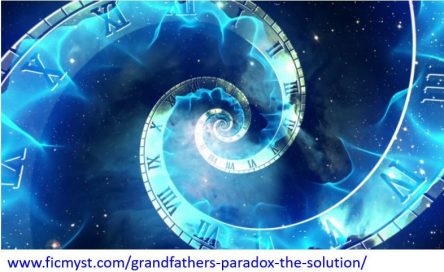Chronology versus time reckoning
Chronology is the schedule of historical events, and its essence is the relative order of events. The chronology can be expressed by the time distance of the events, too, without dates, without giving the calendar years according to any time reckoning. For example: ‘The thirty-year-old emperor attacked our country, but our king, who was 15 years older in the twentieth year of his reign, defeated the emperor in a duel”. From this description, a sequence of events can be constructed.
Time reckoning is the system of time calculation beginning from a known or imagined historical or astronomical event.
A given chronology can be expressed correctly in different time reckoning systems. For example, the sequence of the events of a given decade of our AD system is the same in an old Chinese or in a younger Islamic time reckoning system. Only the dates belonging to the events become different in another time reckoning system.
Gregory’s dilemma: (as described by the blogger)
If our calendar were correct, Pope Gregory XIII could not have corrected the Julian calendar by deleting ten days when he introduced the Gregorian calendar in AD 1582. He would have had to omit 13 days. The vernal equinox (short VEQ; see Abbreviations) moves back one day every 128 years in the Julian calendar. The backwards shift would have been 13 days in 1626 years (45BC-AD1582), while the deleted ten calendar days correspond to only 1280 elapsed years.
Conjunction:
When two planets, as seen from Earth, appear to be so close that they “overlap” (super conjunction), or at least appear very close, the difference in their hour angle or longitudinal ecliptic coordinates is/are within 1 degree. Conjunction (astronomy) – Wikipedia
Metonic cycle (lunar cycle):
This cycle means that a particular lunar phase, e.g., the new moon, falls only after 19 years on the same day of the year, concerning a fixed point of the year, such as the astronomical VEQ-day. The Metonic cycle was the basis of the solar year correction of some lunar calendars in ancient times. Metonic cycle – Wikipedia
Solar cycle: (as a calendar cycle)
The period of 28 years after which, in the Julian calendar, the weekdays of a 366-day leap year return to the same date. After 28 years, the leap year calendars are identical to each other. The 365-day standard years are more often similar. Solar cycle (calendar) – Wikipedia
Nisan: (also called Nissan)
Nisan is the first month in the “religious” Jewish calendar. It lasts 30 days. The beginning of the month of Nisan falls in the period from mid-March to mid-April, as the Jewish calendar is lunisolar. Nisan – Wikipedia
Roman Era:
753BC (founding year of Rome) – AD476 (fall of the Western Roman Empire) or 533BCE – 696CE, according to this study. Consequently, the last period of the Roman Era is the Western Roman Empire (27BC – AD476 or AD194 – 696CE, according to this study).
Middle-Ages:
AD476 – AD1492 (discovery of America by Christopher Columbus) or 696CE – 1492CE, according to this study.
Dark Middle Ages: about the first 300 years of the Middle Ages.
Note: The period of the Middle Ages or the Dark Ages is a subject of discussion among historians and might change country by country, depending on the history of the given land.
Parthia or Parthian Empire: (also named as Arsacid Empire)
247BC – AD228 as accepted today, or 27BCE – 448CE according to this study. The Parthian Empire defeated the Seleucids and often the Romans and occupied today’s Afghanistan, Azerbaijan, Turkmenistan, Tajikistan, Pakistan, Iran, Iraq, Turkey, Armenia, Georgia, Syria, Lebanon, Jordan, and Galilea.
Seleucids, Seleucid Empire:
312BC- 63BC as accepted today, or BC312 – 158CE according to this study. The Seleucid Empire was one of the Hellenistic successor states formed after the death of Alexander the Great. The empire initially included Bactria, Persia, Mesopotamia, Media, Babylonia, Asia Minor, Syria, and Palestine.
